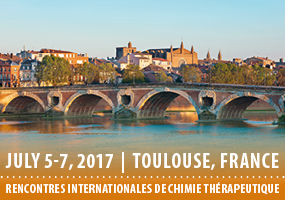
|
Editorial 2017
The challenge faced by the drug industry community has been known for some years now and has been trumpeted on regular occasions. Its product-to-market throughput is regarded by outsiders as inefficient, unsustainable to most industry standards (10 out of 11 candidates entering Phase I fail to reach market approval; only 30% of newly-approved drugs will eventually reach financial profitability). These figures don’t reflect the multitude of reasons for such failures (lack of efficacy, adverse tox effects,…) and obviously should not tarnish some recently successful tour de force, both scientific and economic, obtained for example in the area of HCV or oncology. Drug discovery is one key aspect of the 10+ year-long process of research & development of new therapeutic agents, and its paradigms have regularly evolved to cope with new objectives and challenges. As for any “living system”, it is certain that drug discovery will continue to adapt, and this year’s speakers will clearly illustrate some of its most recent achievements. In addition, while we stay reasonably cautious about predicting the future, we have arbitrarily selected a few recent reports, techniques or organization types that are likely prone to impact drug discovery and medicinal chemistry in the coming years. Fragments in cell: Finding small molecule ligands against validated targets is the essence of drug discovery. The recent methodology described by Cravatt and collaborators[i] has been used to identify small fragment molecules interacting in cells with potentially unknown proteins and to advance them into selective ligands for the modulation of protein function. This will undoubtedly play a preeminent role in a better understanding of biology. From this advancing knowledge, new and better validated targets will likely pave the way towards more efficient drug discovery. DNA-encoded libraries: Momentum has recently been increasing around this paradigm, having been initially postulated as a theoretical concept 25 years ago by Brenner and Lerner. These small molecule encoded libraries have opened up untapped areas of chemical space, now reaching well into the billions of chemical entities[ii]. By humble comparison, the CAS Registry database, containing all registered substances is summed up to be only 130 million compounds. The first compounds from these libraries are entering clinical development. This technique, which is surprisingly rejuvenating the combichem era, will urgently need innovative building blocks and DNA-compatible chemistries upfront as well as fast analoging and follow-up downstream, thus likely impacting organic and medicinal chemistry. Collaborative projects: the recent years have seen large scientific communities (Academic institutions, Pharma companies and small/medium-sized companies) acting together in large public-private Consortia, with the objective of joining forces towards unmet scientific and therapeutic needs. Ventures against infectious and neglected diseases have pioneered the way, and additional areas of interest such as Alzheimer’s or neurodegenerative diseases will soon complement the current portfolio of these joined efforts. Consortia, possibly seen before as “black swans” due to the belief that the divergent interests of potential partners could not co-exist under the same framework, are nowadays becoming increasingly common practice. These operate with shared, well-defined and usually pre-competitive objectives with structured and organized partners (along with complex yet operative legal agreements). The European Lead Factory is a vibrant illustration of such a venture and is demonstrating the power of a collective intelligence aimed at ambitious objectives, including the de-novo design and production of an innovative 200k European compound collection for HTS, and the identification of validated hits against new biological targets[iii]. While complex therapeutic challenges continue to arise, for example with antibacterial resistance, such transverse organizations could well redefine, at least in part, how to tackle these challenges more efficiently, whilst together mitigating the risk of failures. Before closing this short and arbitrary selection of influencers of the future for drug discovery, we should not forget the role played by the Société de Chimie Thérapeutique and other learned societies for our community. By bringing together scientists from different backgrounds, organizations or countries, from Ph.D. students to world-renowned experts, they are helping us and our practices to evolve faster. Examples of some of these evolutions will be unveiled during the speakers’ presentations on the occasion of this 53rd RICT in Toulouse. We certainly look forward to listening to them.
CEO & CSO at Edelris
[i] Cravatt et al. Cell Vol168, Issue 3, p527–541.e29, 26 January 2017 [ii] Andreas Brunschweiger : « Chemical Biology Probes from Advanced DNA-encoded Libraries » ACS Chem. Biol. 2016, 11, 296−307 ; Xiaoyu Li : « Recent advances on the encoding and selection methods of DNA-encoded chemical library. » Bioorganic & Medicinal Chemistry Letters 2017, 27, 361–369 [iii] https://www.europeanleadfactory.eu/results/ |




















